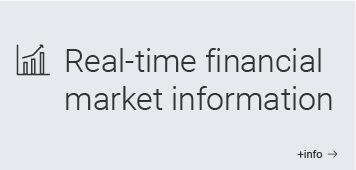AUTHOR OR EDITOR
Office of the Deputy Technical Governor
Hernando Vargas
Office for Monetary Operations and International Investments
Cardozo-Ortiz, Pamela Andrea
Financial Infrastructure Oversight Department
Machado-Franco, Clara Lía
Cadena-Silva, Carlos Alberto
Cepeda-López, Freddy Hernán
Ciceri-Lozano, Aura María
León-Rincón, Carlos Eduardo
Mariño-Montaña, Juan Sebastián
Martínez-Ventura, Ana Constanza
Miguélez, Javier
Ortega-Castro, Fabio Gonzalo
Publication Date:
Tuesday, 23 February 2021
With its annual Payment Systems Report, Banco de la República offers a complete overview of the infrastructure of Colombia’s financial market. Each edition of the report has four objectives: 1) to publicize a consolidated account of how the figures for payment infrastructures have evolved with respect to both financial assets and goods and services; 2) to summarize the issues that are being debated internationally and are of interest to the industry that provides payment clearing and settlement services; 3) to offer the public an explanation of the ideas and concepts behind retail-value payment processes and the trends in retail payments within the circuit of individuals and companies; and 4) to familiarize the public, the industry, and all other financial authorities with the methodological progress that has been achieved through applied research to analyze the stability of payment systems. This edition introduces changes that have been made in the structure of the report, which are intended to make it easier and more enjoyable to read.
The initial sections in this edition, which is the eleventh, contain an analysis of the statistics on the evolution and performance of financial market infrastructures. These are understood as multilateral systems wherein the participating entities clear, settle and register payments, securities, derivatives and other financial assets.
The large-value payment system (CUD) saw less momentum in 2019 than it did the year before, mainly because of a decline in the amount of secondary market operations for government bonds, both in cash and sell/buy-backs, which was offset by an increase in operations with collective investment funds (CIFs) and Banco de la República’s operations to increase the money supply (repos). Consequently, the Central Securities Depository (DCV) registered less activity, due to fewer negotiations on the secondary market for public debt. This trend was also observed in the private debt market, as evidenced by the decline in the average amounts cleared and settled through the Central Securities Depository of Colombia (Deceval) and in the value of operations with financial derivatives cleared and settled through the Central Counterparty of Colombia (CRCC).
Section three offers a comprehensive look at the market for retail-value payments; that is, transactions made by individuals and companies. During 2019, electronic transfers increased, and payments made with debit and credit cards continued to trend upward. In contrast, payments by check continued to decline, although the average daily value was almost four times the value of debit and credit card purchases.
The same section contains the results of the fourth survey on how the use of retail-value payment instruments (for usual payments) is perceived. Conducted at the end of 2019, the main purpose of the survey was to identify the availability of these payment instruments, the public’s preferences for them, and their acceptance by merchants. It is worth noting that cash continues to be the instrument most used by the population for usual monthly payments (88.1% with respect to the number of payments and 87.4% in value). However, its use in terms of value has declined, having registered 89.6% in the 2017 survey. In turn, the level of acceptance by merchants of payment instruments other than cash is 14.1% for debit cards, 13.4% for credit cards, 8.2% for electronic transfers of funds and 1.8% for checks. The main reason for the use of cash is the absence of point-of-sale terminals at commercial establishments.
Considering that the retail-payment market worldwide is influenced by constant innovation in payment services, by the modernization of clearing and settlement systems, and by the efforts of regulators to redefine the payment industry for the future, these trends are addressed in the fourth section of the report. There is an account of how innovations in technology-based financial payment services have developed, and it shows that while this topic is not new, it has evolved, particularly in terms of origin and vocation. One of the boxes that accompanies the fourth section deals with certain payment aspects of open banking and international experience in that regard, which has given the customers of a financial entity sovereignty over their data, allowing them, under transparent and secure conditions, to authorize a third party, other than their financial entity, to request information on their accounts with financial entities, thus enabling the third party to offer various financial services or initiate payments. Innovation also has sparked interest among international organizations, central banks, and research groups concerning the creation of digital currencies. Accordingly, the last box deals with the recent international debate on issuance of central bank digital currencies.
In terms of the methodological progress that has been made, it is important to underscore the work that has been done on the role of central counterparties (CCPs) in mitigating liquidity and counterparty risk. The fifth section of the report offers an explanation of a document in which the work of CCPs in financial markets is analyzed and corroborated through an exercise that was built around the Central Counterparty of Colombia (CRCC) in the Colombian market for non-delivery peso-dollar forward exchange transactions, using the methodology of network topology. The results provide empirical support for the different theoretical models developed to study the effect of CCPs on financial markets.
Finally, the results of research using artificial intelligence with information from the large-value payment system are presented. Based on the payments made among financial institutions in the large-value payment system, a methodology is used to compare different payment networks, as well as to determine which ones can be considered abnormal. The methodology shows signs that indicate when a network moves away from its historical trend, so it can be studied and monitored. A methodology similar to the one applied to classify images is used to make this comparison, the idea being to extract the main characteristics of the networks and use them as a parameter for comparison.
Juan José Echavarría
Governor



















































